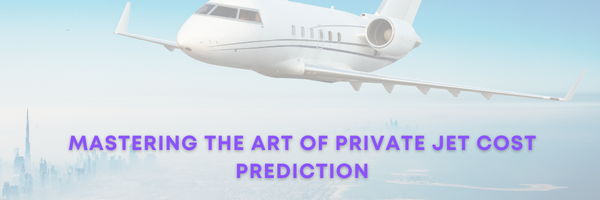
Priceless Journeys: Mastering the Art of Private Jet Cost Prediction
In recent years, the world of private jetting has experienced a boom, attracting many who desire the ultimate flying experience. But how does one accurately forecast the expenses associated with such luxury?

In the opulent world of luxury travel, private jets reign supreme. As this indulgence gains momentum, it prompts an essential query: How can one accurately estimate the associated expenses?
Understanding the Base Costs
Journeying in a private jet is not merely about the initial charter fee or purchase price. Beyond that, you must factor in foundational costs such as pilot compensation, hangar charges, and the ever-fluctuating fuel prices. Each aircraft, with its unique specifications, brings along a distinct set of operating expenses influenced by factors like frequency of use and service requirements.
The Intricacies of Charter vs. Ownership
At first glance, jet ownership may seem exorbitant. Yet, chartering isn’t always the more affordable alternative, especially when demand soars. A meticulous analysis, weighing long-term usage against individual preferences, helps delineate the more economical choice.
A private jet cost estimator stands out as an indispensable ally in this complex landscape. This tool not only provides a tangible figure but also guides aviation aficionados through private flying’s intricate nuances, ensuring an uncomplicated experience.
Delving into Depreciation
Aircraft, much like other luxury assets, undergo depreciation. Over the years and across numerous journeys, even the most meticulously cared-for jets will see a dip in their market value. This inevitable reduction has profound implications, especially for those contemplating future sales or an upgrade.
Operational Expenses and their Variables
While certain costs remain steady, operational expenses are often a moving target. These can encompass diverse aspects, from charges for the crew’s accommodations to gourmet in-flight meals and specialized services for international journeys. To anticipate these effectively, a keen eye on trip nuances is indispensable.
Fly-by-hour Programs and Memberships
Hourly programs are an attractive proposition for many, where individuals pay a predetermined amount for every flying hour. While it offers billing transparency, one must also be cognizant of the associated terms, which might subtly affect the overall expenditure.
Insurance and Liability Considerations
Prioritizing safety is non-negotiable. Comprehensive insurance policies safeguard jet proprietors from potential liabilities. Nevertheless, the costs of these premiums aren’t fixed; they oscillate based on factors such as the aircraft model, its operational frequency, and territorial coverage.
Customization and Personal Preferences
Every private jet can be a reflection of its owner’s personality. Luxuries, such as monogrammed interiors or exclusive entertainment systems, can impact the bottom line significantly. Budgeting for these personal touches is crucial for a holistic cost overview.
Maintenance, Repairs, and Overhauls (MRO)
Ensuring a jet’s pristine condition is about more than aesthetics; it’s a safety imperative. Scheduled checks, unforeseen repairs, or in-depth overhauls, although essential, can add considerably to the annual financial outlay.
Navigating Tax Implications
Taxation in private aviation is multifaceted. From the sales tax levied during purchase to recurring property taxes and service-specific levies, a thorough grasp of these charges is integral to forecasting costs with precision.
Just as with any other high-value asset, the intricacies of regional, national, and international tax laws play a pivotal role. Jurisdictions vary in how they approach private aircraft, with some offering incentives to attract aircraft owners, while others might pose heavier taxes to dissuade luxury ownership.
Keeping abreast with the frequently evolving tax landscapes, considering bilateral aviation treaties, and understanding exemptions can make a significant difference in the long-run budgeting for private jet ownership.
Additionally, working with experts, such as tax consultants who specialize in aviation, can lead to potential savings and a clearer understanding of one’s financial obligations in the private jet arena.
Decoding Fuel Costs and Their Volatility
Fuel, beyond its pivotal role in operations, also presents budgeting challenges due to its unstable pricing. Global oil market shifts, geopolitical events, or regional taxation policies can induce dramatic price variations, necessitating diligent monitoring.
Understanding the intricacies of private jet travel expenses isn’t just about numbers. It’s about mastering the art of prediction, being prepared for unforeseen expenses, and ensuring that every journey, no matter how luxurious, remains priceless. After all, when it comes to the skies, knowledge is as valuable as the experience itself.
In conclusion, grasping the nuances of private jet expenses goes beyond mere arithmetic. It demands a keen understanding, preparedness for unexpected charges, and the realization that every airborne moment, irrespective of its luxury quotient, remains genuinely invaluable. The skies, after all, offer both opulence and knowledge in equal measure.